In this article, we’re going to explore how to make the most out of a single day in Bonn, Germany. I’m here to take you through the city’s highlights, ensuring you can soak up as much history, culture, and scenery as possible within 24 hours.
Nestled on the banks of the Rhine, Bonn may be smaller than Berlin or Munich, but it packs a punch with its rich past and vibrant cultural landscape. It’s the city that gave the world Beethoven, after all. We’ll walk through quaint streets, visit museums that invite curiosity, and perhaps enjoy a slice of the local cherry cake known as Kirsch Kuchen.
I’ve always wanted to visit Bonn after having to memorize it as one of Europe’s capitals as a kid. Fast forward 30 years and I nearly came to study here. So I was extra keen to see what I had missed out on.

Bonn is a great city to explore. Getting around is easy, with its accessible public transport and walkable city center, priming us for a day of effortless discovery. From lush gardens and historic houses to modern political institutions, we’ll unravel a tapestry that’s as German as it is uniquely Bonn.
Let’s get ready to step into a day you won’t soon forget.
Love Germany? Click here to download your free guide to 25 Incredible Things You Must Do In Germany In Your Lifetime. You won’t want to miss them!
A Brief History Of Bonn
Bonn, a city teeming with historical depth, is situated along the banks of the Rhine River in the German federal state of North Rhine-Westphalia. Its history stretches back to the Roman period, having been founded in the first century B.C. as a Roman settlement. Originally named “Bonna,” the city began as a small garrison intended to protect the region from Germanic tribes.
During the Middle Ages, Bonn evolved into a significant ecclesiastical center. It was in this period, around the 11th century, that the establishment known as Munster Basilica was constructed, which still stands as a testament to the city’s medieval legacy.
The city later became the capital of the Electorate of Cologne, a principality of the Holy Roman Empire. This status enhanced its cultural influence, a legacy that is palpable in Bonn’s many historical buildings dating from this epoch.
The early modern period saw Bonn continue to flourish, especially during the reign of the elector and archbishop Joseph Clemens of Bavaria. Under his auspices, Bonn saw significant development, including the erection of a baroque-style palace, which, after a chequered history, now serves as the main building for the University of Bonn.

Perhaps one of the most famous aspects of Bonn’s history is its connection to the iconic German composer Ludwig van Beethoven, who was born there in 1770. The house of his birth is still a revered museum and pilgrimage site for music enthusiasts from around the globe.
In the aftermath of World War II, Bonn was chosen to be the provisional capital of the Federal Republic of Germany in 1949, mainly because of its strategic location and the fact that it was less damaged than other major German cities. As such, it was intended to be a temporary solution until Germany’s eventual reunification. However, it remained the capital for over four decades, playing a pivotal role during the Cold War era until 1990.
Following German reunification, the capital was moved to Berlin, but Bonn did not fade into obscurity. The transition was managed by the Bonn–Berlin Act, which facilitated the shift while ensuring that Bonn would remain a center of international cooperation.
The city now hosts various United Nations institutions and numerous other international organizations, sustaining its legacy as a place of global significance. It has embraced its reputation as a “Federal City” and continues to be a vibrant locus of political activity, scientific research, and cultural life.
What To See In Bonn In One Day
One day in Bonn is not much, but you can see the main attractions and have a great overview of this city. Simply follow our Bonn itinerary below stop-by-stop for your incredible day.
It’s been designed to be completed by foot and public transport starting your day at Bonn’s main train station. Up until lunch, you can walk to all of the places.
Bonn is a lovely place to wander and explore so embrace it!
Stop 1: Bonner Münster – Explore the Bonn Minster
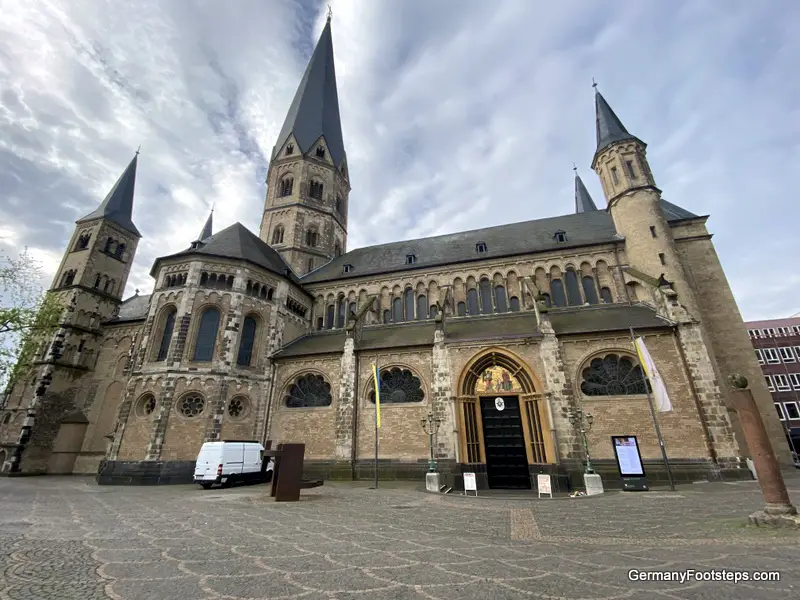
Begin your Bonn journey where its heart beats the strongest – the Bonner Münster. This behemoth of Romanesque architecture is not just a historical building; it’s a narrative in stone and stained glass that has watched over the city for over a millennium.
Its two towering spires, intricate exterior, and cavernous interior whisper tales from the past, inviting visitors to understand the depths of Bonn’s spiritual heritage.
While here, dare to ascend the narrow steps of the southern tower. The spectacular view you’ll encounter is a sweeping panorama that stretches from the past into the present – a fitting overture for your day in this storied city.
Stop 2: Beethoven-Haus – Visit Beethoven’s Birthplace
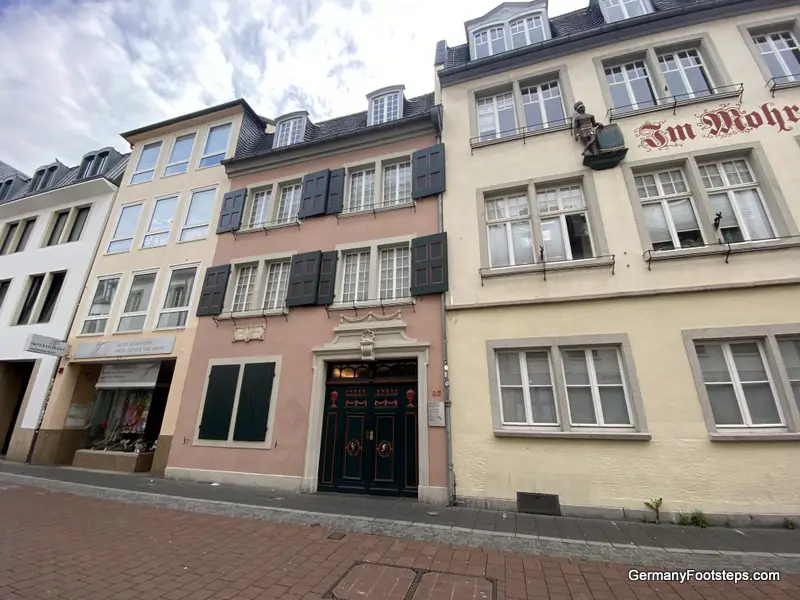
Your second stop, a modest yet significant home nestled on Bonngasse, is Beethoven-Haus. Here, the air is thick with musical history; it’s where Ludwig van Beethoven was born in 1770. Converted into a museum and memorial site, it houses the largest Beethoven collection in the world.
As you traverse from room to room, the exhibits not only recount the composer’s life but also relate his hardships and triumphs.
Original instruments, manuscripts, and personal belongings offer an authentic experience, akin to walking through Beethoven’s life alongside him, listening to the echoes of his compositions as they were first penned.
Stop 3: Altes Rathaus – Admire the Rococo Town Hall
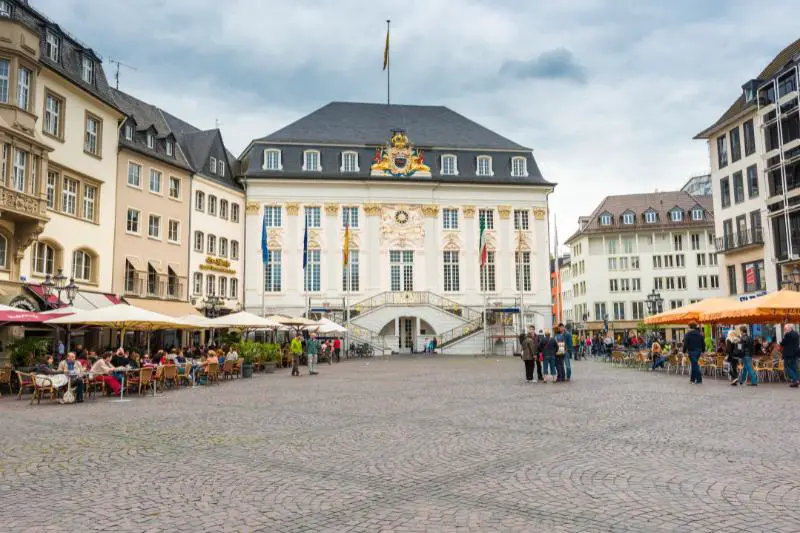
Just a short walk from the solemnity of Beethoven’s childhood, the Altes Rathaus stands in stark, splendid contrast. This beautifully preserved Rococo building, with its golden gate and stunningly symmetrical staircase, has been Bonn’s pride since the 18th century.
It has hosted numerous dignitaries and historical events, playing its part in shaping the narrative of the city.
The town hall is not only a feast for the eyes but also a symbol of Bonn’s enduring independence and importance, even as reigns and regimes have come and gone.
Stop 4: Kurfürstliches Schloss – Visit the Electoral Palace
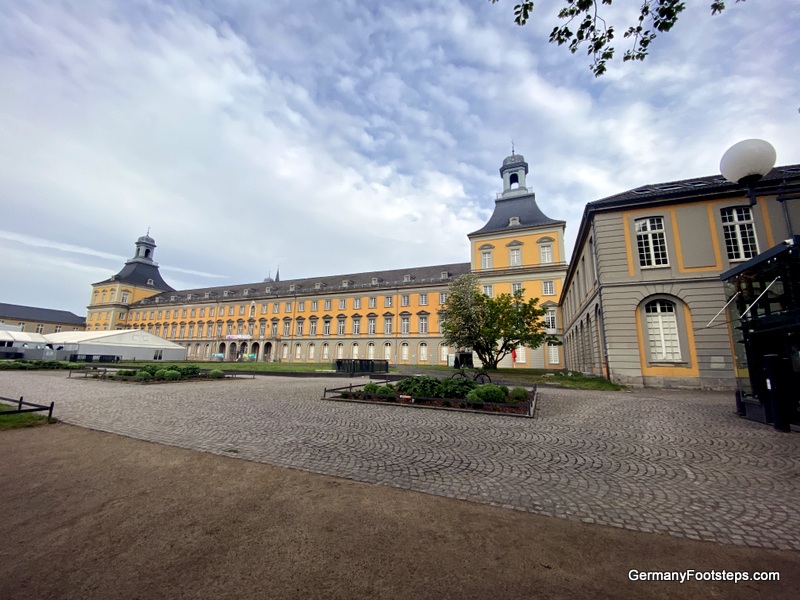
Next, find your way to the Kurfürstliches Schloss, an embodiment of regal splendor and academic life. This Electoral Palace, enveloped in the academic buzz of the University of Bonn students, is where past and present dialogue.
The palace’s impressive façade and the surrounding Hofgarten are waypoints for both scholars and visitors alike. The juxtaposition of classical grace with the vibrancy of student life paints a living picture – one where the antiquity of the palace’s storied walls supports the contemporary knowledge and culture cultivated within.
This palace is huge and seemingly goes on and on and on. It must be one of the biggest ones in the country and you can easily have a wander.
Stop 5: Poppelsdorfer Schloss – Stroll Around Poppelsdorf Palace
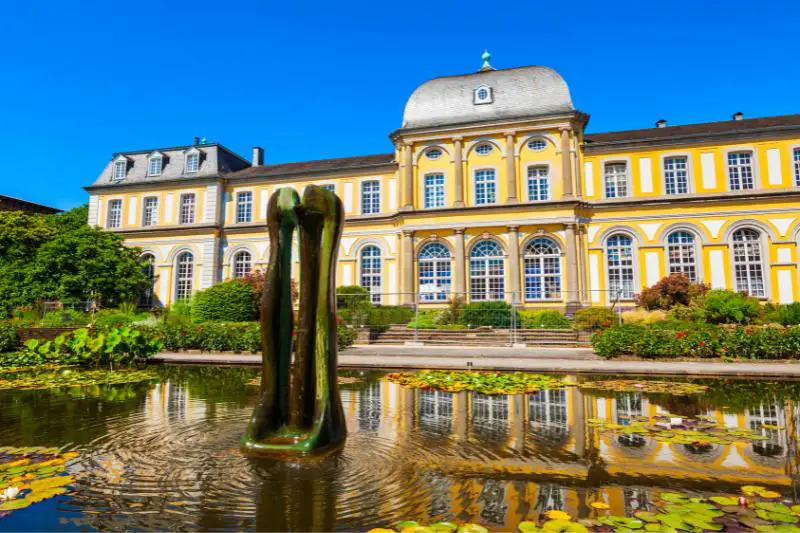
Continue your stroll to Poppelsdorf Schloss, an epitome of Baroque architecture and natural splendor. Today, it is part of the University of Bonn. This palace won’t just mesmerize you with its grandeur; the sprawling botanical gardens transport you to an era of leisurely royal walks and scientific inquiry.
As you amble through the myriad of flora, pause to consider that each tree and shrub contribute to centuries-old botanical studies. The collective feeling of enlightenment and wonder remains palpable amongst the greenhouses and garden paths, marking this locale as a bridge between nature and knowledge.
Stop 6: Brauhaus Bönnsch – Lunch at a Traditional Brewery

By now, the allure of a hearty meal in an authentic setting will be irresistible. Brauhaus Bönnsch offers just that, with its home-brewed beer and Rhineland specialties. As you settle into the rustic, convivial atmosphere, take a moment to observe the traditional cooper brew vats.
Not only is this where you refuel with local fare, but it’s also a cultural immersion, as each dish and drink is a nod to the regional culinary craftsmanship that dates back centuries.
Stop 7: Haus der Geschichte – Dive into History at the House of German History

Sated, you can hop on the light rail 66 to take you to the amazing Haus der Geschichte just 11 minutes away. Google Maps can show you the stops.
This modern museum is dedicated to Germany’s recent past. More than a mere chronicling of events, it’s an exploration of collective memory and national identity. The exhibits are a testament to how modern-day Germany has come to terms with its history, presenting a transparent, critical narrative of events post-World War II until today.
This museum isn’t just informative; it stirs up a dialogue, compelling you to understand the narratives that have shaped modern Europe.
Stop 8: Kunstmuseum Bonn – Experience Modern Art at Kunstmuseum Bonn

A quick walk from Germany’s contemporary history narrative is the Kunstmuseum Bonn, a temple to modern art. As you wander through the expansive halls, you’ll be introduced to a seamless blend of post-war German art and international contemporary pieces.
The museum prides itself on its focuses, including a significant collection of Rhenish Expressionism and works by August Macke.
Here, the art speaks – not just through bold colors and avant-garde forms – but through the stories they encapsulate: a nation’s creative resurgence and cultural dialogue.
Stop 9: Bundeskunsthalle – Discover Exhibits at the Art and Exhibition Hall

If you still have time left, your cultural itinerary culminates at the Bundeskunsthalle, a center for interdisciplinary exhibitions. As versatile in function as the exhibits it hosts, the Bundeskunsthalle transcends mere art display; it’s where science, culture, technology, and art converge.
Whether it’s an archeological showcase or an interactive science exhibit, this is where diverse worlds collide to provide you with a multi-faceted understanding of humanity’s creative and intellectual endeavors.
This collection of stops truly captures the essence of Bonn – a city that honors its past while continually evolving. From the revered echoes in the Bonner Münster to the thoughtful silence within the walls of the Bundeskunsthalle, Bonn presents an experience rich in history, culture, and art, all while offering gastronomic delights.
This one-day trip through the city is not just a journey through locations, but a narrative of Bonn’s spirit through time.
If you are leaving Bonn after this stop, the Bonn UN Campus train stop is just a short walk from here. You can catch a train from here directly to Cologne and other cities.
How To Get To Bonn
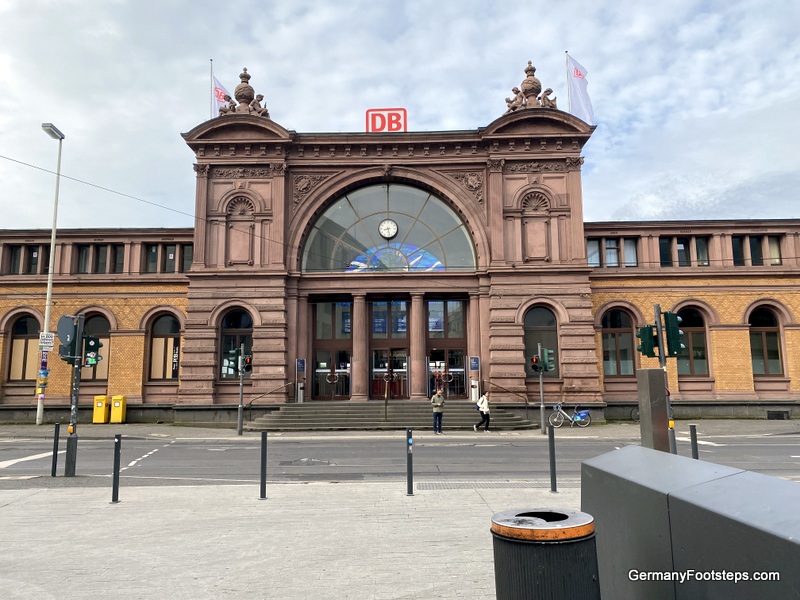
Navigating your way to Bonn from any corner of Germany is a journey wrapped in efficiency and comfort, thanks to the country’s robust transportation network.
If you’re starting from one of Germany’s metropolitan hubs like Berlin, Munich, or Hamburg, consider taking the Deutsche Bahn (DB), Germany’s national railway. Check the schedules online or at any railway station; look for direct connections to Bonn Hauptbahnhof, the city’s central station. Booking in advance often secures you a better price.
Click here to check out Deutsche Bahn schedules and prices.
Perhaps speed is your preference. In that case, the InterCity Express (ICE) trains offer swift travel between major German cities and Bonn. Comfortable seating and the pleasure of watching the German landscape whisk by your window complete the experience.
Should you opt for a journey by road, long-distance buses are at your service. Operators like FlixBus provide amenities including free Wi-Fi, power outlets, and generous legroom. The bonus? It’s usually the most budget-friendly option.
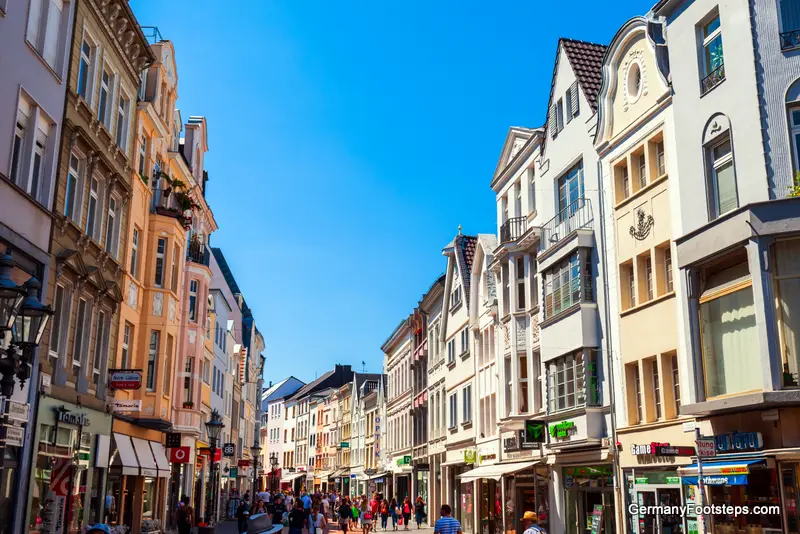
Alternatively, taking the car could gift you with autonomy and the leisure of stops along the way. Germany’s Autobahnen (highways) are renowned for their quality and the chance to experience the famous no-speed-limit zones. Bonn is well-connected by autobahns, with the A59, A555, and A565 leading directly into the city.
Click here to check out car hire options and prices.
Once in Bonn, the city opens up a seamless local public transport network with trams and buses. Google Maps can help you navigate it.
Final Words
One day in Bonn offers a delightful snapshot into Germany’s rich history and vibrant cultural scene. Whether wandering through a museum, or taking a leisurely stroll past a palace, Bonn’s variety ensures a memorable experience for each visitor.
Read our guides to nearby Cologne here, Brühl here and Aachen here. Find all our guides to Western Germany here or check out our one week itinerary for Cologne/West Germany here that includes Bonn.


I as well am intrigued by having been in Germany twice.Flew into Duessdorf,visited Bonn including market square,cathedral,and Beethoven birthplace,Wuppertal,rode elevated streetcar,coal mine,rode train to Stuttgart-speedy-and on second trip flew into Zurich, Switzerland,went up Jungfrau,11,000feet into snow, cruised Rhine and through Black Forest unique clock shops. Wonderful recollections by reading your edition.
Thanks Renetta. Those trips sound amazing!